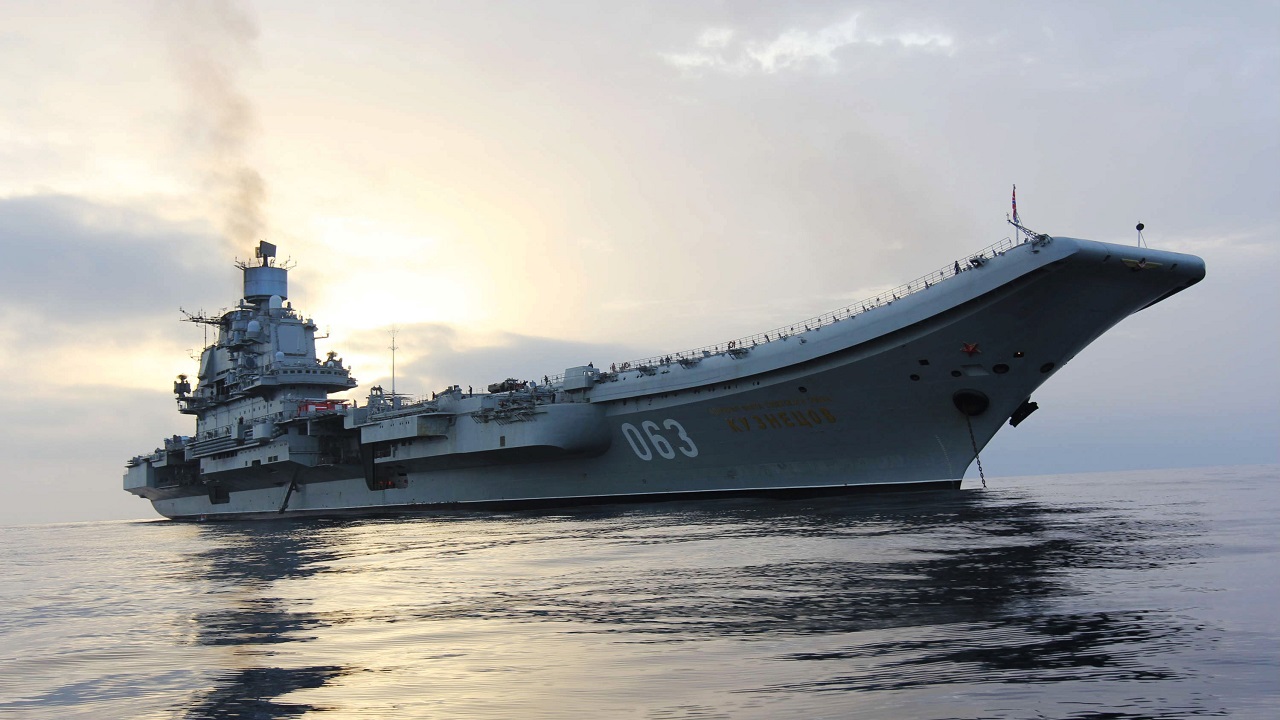Admiral Kuznetsov is clearly not one of Russia’s most powerful weapons of war. Moscow’s only aircraft carrier has been riddled with what seems like countless problems and may never sail again. And with Russia’s sanctions problems getting worse by the day, this might be Moscow’s last aircraft carrier for many years to come: Aircraft carriers are one of human civilization’s most advanced technological accomplishments. Floating cities, used to project air power around the globe, the aircraft carrier is a marvel of engineering and ingenuity. And aircraft carriers serve as a litmus test. Prohibitively expensive, and singularly geared toward power projection, aircraft carriers are indicative of a nation’s wealth, and a nation’s true ambitions. Only great powers have the resources to field an aircraft carrier. And only great powers with the intent to have a presence on different continents, across the sea, have any use for an aircraft carrier.
The United States aircraft carrier fleet, which happens to be the world’s largest by 550 percent, implies volumes about the nation’s true character – resource rich, interventionist, a bona fide regional hegemon. Russia’s aircraft carrier (singular) implies volumes about the nation’s character, too – economically hobbled, primarily concerned with European affairs.
Russia’s sole aircraft carrier is now known as the Admiral Kuznetsov; the ship’s full name is the Admiral Flota Sovetskogo Soyuza Kuznetsov. Arriving at the current name took a few tries, however. First, the Kuznetsov was named Riga. Then, the name was changed to Leonid Brezhnev. And once more, to Tbilisi. Finally, the Kuznetsov moniker was settled upon.
The Admiral Kuznetsov, was built in 1985 but did not formally join the Russian Navy until 1995 – four years after the fall of the Soviet Union. The Kuznetsov was not built alone. A sister ship was built alongside the Kuznetsov, at the Black Sea Shipyard, in modern Ukraine. The sister ship, known then as the Varyag, was not finished when the Soviet Union fell, so the newly formed Ukraine took possession of the vessel. Without the resources or need to finish the aircraft carrier, Ukraine sold the unfinished hull to China. The Varyag is now the Liaoning, one of China’s two aircraft carriers.
Ukraine tried to keep the Admiral Kuznetsov, too. When Ukraine won independence in 1991, newly minted Ukrainian President Leonid Kravchuk sent a telegram to the Kuznetsov’s commander, Viktor Yargin, informing him that the Kuznetsov was now Ukrainian property. Still, Russian commanders urged the Kuznetsov to leave the Black Sea. She did, joining the Northern Fleet and avoiding Ukrainian control.
While US aircraft carriers were designed to project power far away, onto distant shores, the Kuznetsov was designed for a much more limited role: projecting power sufficient to support and defend Russia’s fleet of surface ships and submarines. So, unlike US nuclear powered aircraft carriers, which can stay at sea for decades at a time, the Mazut consuming Kuznetsov lasts just 45 days at sea. And unlike US carriers which can carry over a hundred aircraft, the Kuznetsov carries just 18 Su-33s, 6 MiG-29Ks, 4 Ka-31s, and 2 Ka-27s.
Without nuclear power, the Kuznetsov is somewhat obsolete. The Mazut that powers the vessel is a goopy, tar-like substance. Sailors consider Mazut to be a revolting nuisance that simply cannot be removed from clothing. Once upon a time, Mazut, a heavy petro-chemical, was the standard fuel for commercial and military vessels; Mazut has value – it has a high volume to energy ratio relative to lighter distillates. Yet, the substance’s various drawbacks prompted shipbuilders to switch to nuclear and gas turbine powered systems. By the time the Kuznetsov first sailed in 1985, Mazut had been out of date for nearly two decades. Today, the fuel source is positively ancient.
The Admiral Kuznetsov made her maiden deployment from December 23, 1995 until March 22, 1996. For 90 days, the vessel operated in the Mediterranean Sea. The deployment was coordinated to coincide with the Russian Navy’s 300th anniversary. Deployed alongside a frigate, destroyer, and oiler, the Kuznetsov conducted continuous flight operations, breaking the boat in, and adjusting to the Mediterranean climate. The Russian aircraft often operated close to Israeli shores, where Israeli F-16s would provide escort.
Since 2017, the Admiral Kuznetsov has been out of action. After being deployed off the coast of Syria, the Kuznetsov was called home for repairs and a retrofit. The retrofit, meant to add twenty-five years to the vessel’s service life, included upgrades to the electronics and powerplant. The retrofit has not gone as planned. In October 2018, Russia’s largest floating dry dock, the PD-50, sank. And when it did, one of its 70-ton cranes ripped a 200 square foot hole in the Kuznetsov’s deck. Removing the crane required a full two months. The mishaps weren’t over. In December 2019, a fire broke out. Two workers were killed. Fourteen were seriously injured. The bill: several million dollars.
Russian officials keep promising the Admiral Kuznetsov will return to service in 2024. Naturally, pundits are growing skeptical. What should have been a simple retrofit, for a Mazut-fueled relic, has taken five years and counting. Under the best circumstances, the Kuznetsov will return to service in 2024, after nearly a decade out of action, as a dull imitation of its American counterparts.
Harrison Kass is the Senior Defense Editor at 19FortyFive. An attorney, pilot, guitarist, and minor pro hockey player, he joined the US Air Force as a Pilot Trainee but was medically discharged. Harrison has degrees from Lake Forest College, the University of Oregon, and New York University. He lives in Oregon and listens to Dokken.

